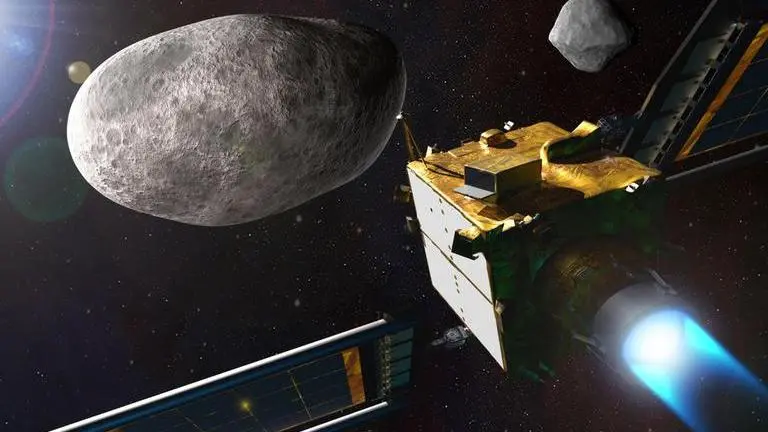Updated 13 September 2021 at 18:10 IST
NASA's asteroid-slamming DART spacecraft reaches final stages of development
NASA's Double Asteroid Redirection Test (DART) is being planned to prepare Earth's defence mechanisms to protect it from future asteroid hazards.
- Science News
- 2 min read

NASA has made it to the final stages of the Hollywoodesque Double Asteroid Redirection Test (DART) mission as the spacecraft, headed for a collision with an asteroid system, has been equipped with innovative solar array technology and a camera, according to a statement on NASA's official website. NASA's Double Asteroid Redirection Test (DART) is being planned to prepare Earth's defence mechanisms to protect it from future asteroid hazards. The launch, scheduled for November 2021, is targeted towards the Didymos asteroid system, approximately 109.4 crore kilometres away from Earth.
According to NASA, DART is a carefully planned demonstration that will help determine if kinetic impactor technology, which requires flying a spacecraft directly into a small Solar System body, can serve as a reliable method of asteroid deflection in the event where a hazard ever heads for the Earth. Notably, NASA's spacecraft will ram into Dimorphos, the smaller moonlet orbiting the larger Didymos asteroid, at a speed of 24,140 kmph to change its course.
Features of DART
In the latest development, the suicidal aircraft has been equipped with a compact Roll-Out Solar Arrays (ROSA) coiled into two gold cylinders and the Didymos Reconnaissance and Asteroid Camera for Optical (DRACO) navigation tucked beneath the solar panels at the sides. Developed and built at the Johns Hopkins Applied Physics Laboratory (APL), the spacecraft with its new features will be able to navigate through space and reach the Didymos asteroid system, said NASA. It further added that DART would be the first spacecraft to fly with the new bus-sized flexible and rollable arrays to pave the way for their use on future missions. Meanwhile, when combined with the autonomous navigation software SMART Nav (Small-body Maneuvering Autonomous Real-Time Navigation), the upgraded imager DRACO will play a key role in helping DART navigate through space and identify the correct asteroid to aim itself towards it.
The spacecraft will, reportedly, launch on a SpaceX Falcon 9 rocket from Vandenberg Space Force Base near Lompoc, Californiaand will reach the asteroid by the fall of 2022. Interestingly, despite happening over 100 crore kilometres away from Earth, the collision will be visible to ground-based telescopes. The scientists will then use the data to determine the exact change in the orbital period of Dimorphos, said NASA.
Advertisement
Image: @NASA360-TWITTER
Published By : Harsh Vardhan
Published On: 13 September 2021 at 18:10 IST
